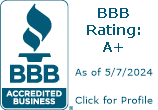HOME INSPECTION CLEVELAND OHIO
shows no problems or only one or two, we believe that you can consider
the wiring safe. If there are signs of problems in many places,
we suggest you look elsewhere. If the wrong receptacles are used,
you can replace them with the proper type, or use pigtails - having
this professionally done can range from $3 to $10 per receptacle/
switch.
It's common because it's an easy mistake to make when hooking up wires and because receptacles work fine even when the polarity is reversed. You generally don't know the condition exists unless you look for it. If you think you're home's wiring is a bit haphazard or may contain some conditions of reverse polarity, it's a good idea to check for it.
You can buy a simple circuit tester for less than $20. Just plug it into all duplex receptacles; test both the top and bottom.
If you discover reverse polarity:
1) Shut off the circuit breaker that serves that receptacle (the tester's lights will go out).
2) Unscrew the cover plate from the receptacle, and use a voltage tester to be sure none of the wires in the electrical box are still "hot."
3) Unscrew or release the wires from the receptacle and re-fasten them to the proper terminals--white to the silver (neutral terminal and black to the brass hot terminal. The bare or green wire should connect to the green screw.
4) Put the cover plate back on, turn the circuit back on, and test the receptacle again. Note: If the tester indicates reverse polarity but the wires are hooked up to the proper terminals, call an electrician. Also if you don`t feel comfortable doing this or don`t have a backgound in electrical, one should consider hiring an electrician.
Federal Pacific Panels: Are predominate in this area of northeast Ohio. These type of panels have had noted safety defects as published by the CSPC. When the wire that leads to the breakers overheats and trips the breaker for the first time... and then reset, there may be a tendency for the breaker to fail to trip if the wire that leads to the breaker overheats again on that same breaker.
 We also recommend you visiting a site that has in my opinion has explained the F.P.E. panel in clarity. Go to :http://inspectco.com/PDFS/FPE_Panels_pdf.pdf
We also recommend you visiting a site that has in my opinion has explained the F.P.E. panel in clarity. Go to :http://inspectco.com/PDFS/FPE_Panels_pdf.pdf


